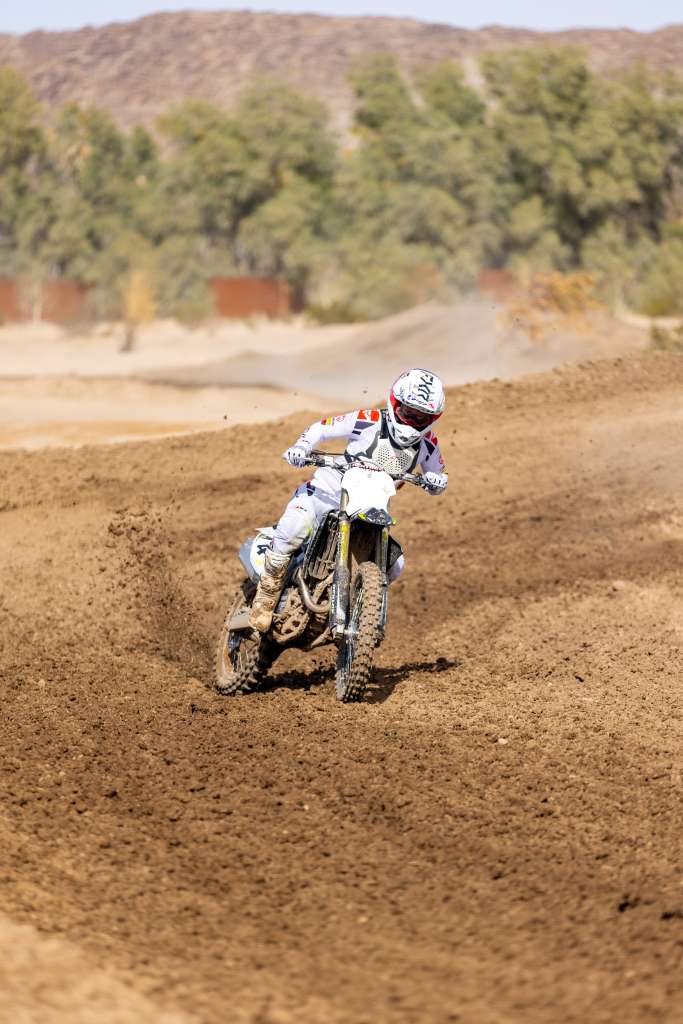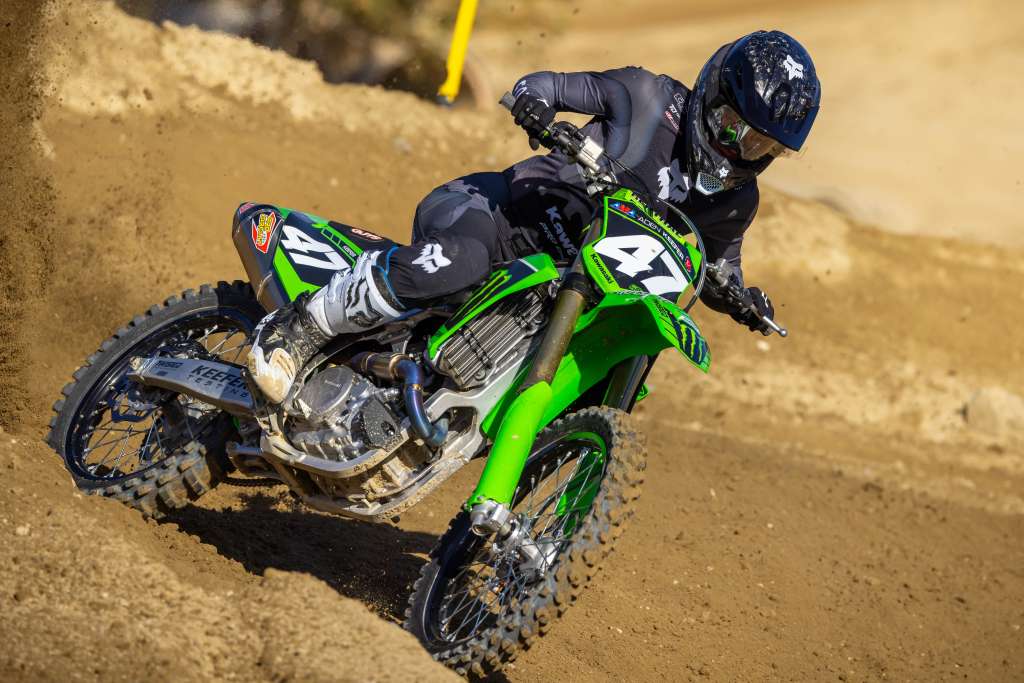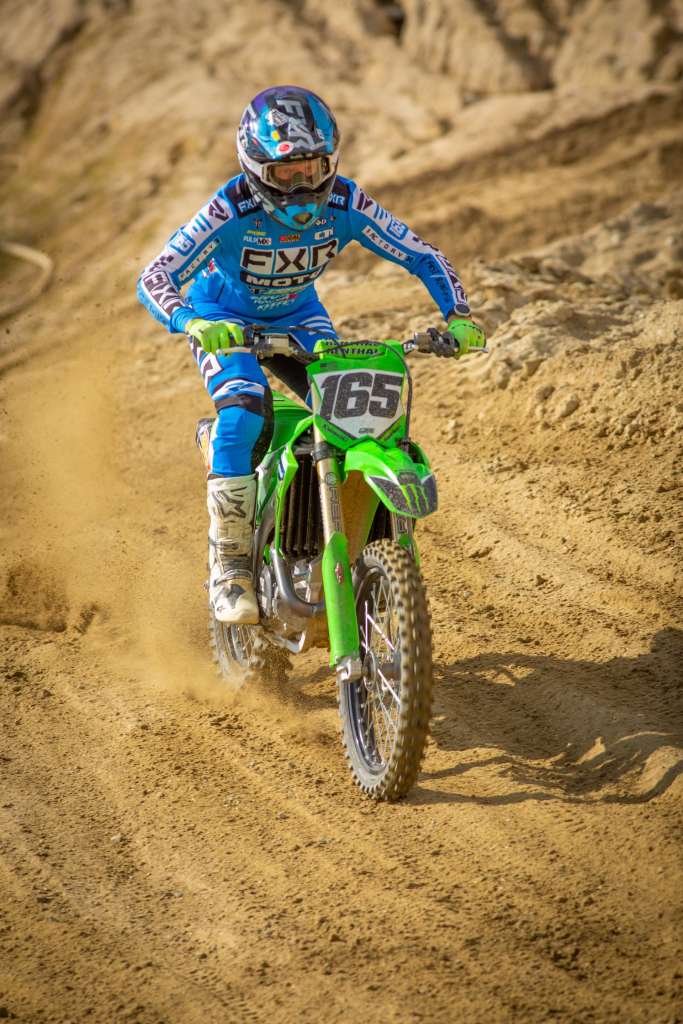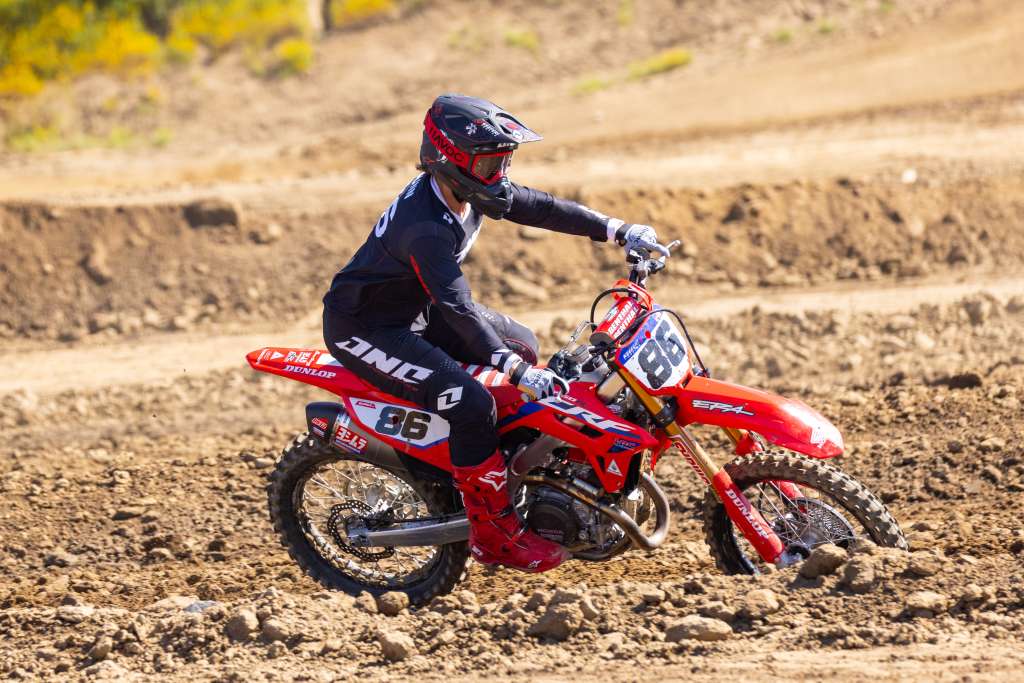Figuring out what is going on with your dirt bike doesn’t have to be that difficult. Sometimes it can get confusing on what your bike is doing wrong on the track and with that comes confusion on which way to go in order to get you comfortable. There is a little cheat code that I haven’t told many people but I wanted to help you al dial in your bikes easier. In order to keep everyone test riders I thought why not let out this simple yet effective way that some don’t know about. Hopefully all other motocross media follows suit as it can only help anyone that is trying to set up their machines. I think if other media test riders can break the bike down by on or off throttle, it will help everyone to have a happier dirt bike life. This is what I am here for!
Theory: If you broke down the dirt bike to “on or off” throttle situations it makes pinpointing the problem area of the suspension (and sometimes even the chassis) a lot easier. Look, I am no engineer but I can pick apart a bike pretty decent and after many years of testing and giving feedback to engineers, suspension techs, project leaders, etc. this seems to be the easiest, most universal way to speak “testing”. Of course there are other areas of the bike that could relate to the explanations below but we narrowed it down to easy to use examples in order to make it not so difficult .
So with aforementioned broken down, how does this help you, the rider, when you’re at the local track? Below are a few examples of how to help yourself or help your suspension/chassis tuner

Think about it this way:
On Throttle: When you’re on throttle the front of the bike is light and the rear of the motorcycle is loaded. Coming out of a corner means you’re getting squat from the rear end the front end is lifting upward.
Examples:
Fork On Throttle:
Deflection: If you’re on throttle and your fork is getting some deflection you could narrow it down to possibly a stiff initial compression setting/oversprung/high oil level or possibly a shock sag that is too low. Easiest way to troubleshoot this problem is check your rider sag to ensure your sag reading is at the correct recommended setting. Next thing would be to try to soften the fork compression to see if that helps the initial part of the fork’s stroke. If you had an aftermarket suspension company re-valve/re-spring your fork and you still get this sensation after you checked the previous two things then it might be that your fork is over sprung. Especially if your fork hurts your hands on slap down landings (more on that below).
Headshake: Even though headhsake could basically be classified as deflection I feel like head shake is a direct result of a fork that is too stiff or a headset that is too loose. If you’re on throttle on flat ground and you experience headhsake iit could be a direct result of a fork that is too stiff. Before you make it conclusions on fork firmness however, make sure to check and see if your steering headset is loose. You can check too see if your steering headset is loose by putting your bike on the stand and lightly tap your handlebars to see if they resist from going all the way to the locks. If they go all the way down to the lock with a light tap then you have a loose steering headset and you’ll need to tighten. Having a loose steering headset is a common problem that I have seen with weekend riders.
Firm Feel Through Hands: If you’re getting a firm feel through hands on throttle under choppy conditions or maybe even slap down landings when you’re on throttle it is most likely a stiff fork setting or oversprung. Usually when I have a firm feeling through my hands I can soften the fork compression and get more movement in the fork which in turn could give me a better hand feeling through the bars.

Shock On Throttle:
Harsh feeling under load (out of corners): This can happen when a the shock is too low and/or soft. If sag is set too low the harsh feeling is caused by the shock riding too low in the stroke so raising the sag a little can help this. Also, having a soft compression setting (HSC or LSC) will cause the rear of the bike to feel harsh on acceleration. Another aspect to this is having a slow rebound setting with your shock and that causes packing which also can cause harshness.
Low Rear End Feel: A low rear feel is either a soft compression (HSC or LSC) or a too low of a sag setting.
Side To Side Movement (Swapping): This one is a little difficult. Getting this type of movement can mean either you have a too tall of a rear end setting or too low. Either one can cause this but determining on if you’re too high or too low on shock preload you will first have to diagnose if your machine feels harsh out of corners or gives you a stinkbug (rear end hight feeling) white sitting on bike.
Pushing/Sliding Out: This can be because you have a sag reading that is too low or a soft high speed compression setting. Either one of these can cause your rear end to slip out or push. Stiffening HSC or raising your sag will help.

Off Throttle: When you’re off throttle the front of the bike is loaded and the rear of the bike is getting lighter or is light. Coming into a corner (think of right before area 1 of corners) the fork is being forced down and the rear is starting to lighten up (or lift upward).
Examples:
Fork Off Throttle:
Harshness: Harshness is a little tricky when it comes to the fork. People think harshness in the front end means it’s stiff (and it can) but sometimes when you’re off throttle and you feel harshness it can be that your fork is too soft and is riding in the middle part of the stroke. You can try stiffening your fork to see if it improves comfort and it that does then you’re soft. Also having a slow rebound setting can give you harshness because the fork can be too slow to come back up while braking. Even when you’re braking the rebound is important because the fork still moves slightly when under load and that rebound setting can affect this.
Low Feeling/Diving: If you feel like your front end is low off throttle is likely to be too soft or your fork is too high up in the clamps. You can start with one of those to dissect problem but if it was me, I would try to stiffen up compression a little to see if that helps. If it does and your balance still feels low then work your way into dropping your fork height. Anything over 5-7mm of fork height is excessive and will upset the balance of your bike. Another aspect to this is that your shock sag is high or your shock is too stiff which forces your front end down off throttle.
Deflection: If your fork is deflecting off throttle then it either is a stiff compression setting or a slower rebound setting. Either one of these can cause deflection off braking bumps.

Shock Off Throttle:
Harshness: A stiff feeling shock gives a rider harshness because when you’re off throttle and the weight goes forward your shock should be lighter in its stroke which could mean the low speed compression setting could be too stiff. A too high of a sag setting can also cause harshness off throttle so make sure your sag is in/near the correct recommend setting.
Lack Of Rear Traction: If your rear end is losing rear traction off throttle you can adjust your high speed compression to a softer setting to essentially lower the rear a bit or drop your sag a little to get that tire to bite more off throttle. I usually try to adjust my HSC before sag.
